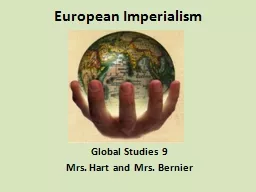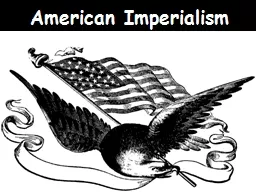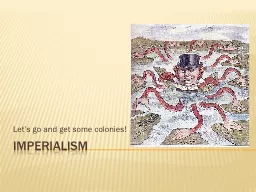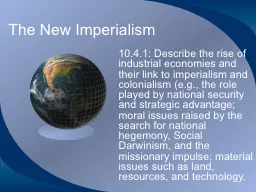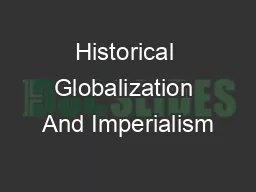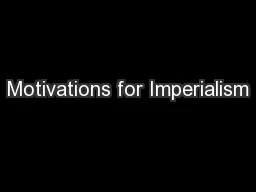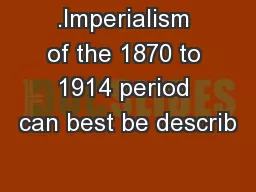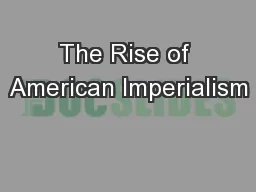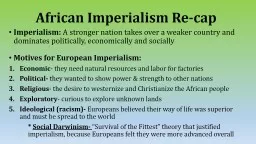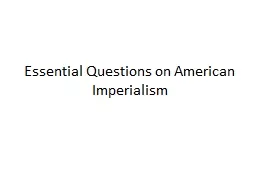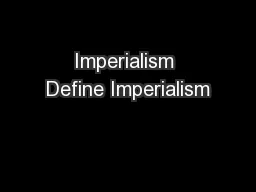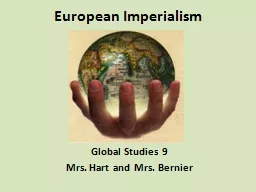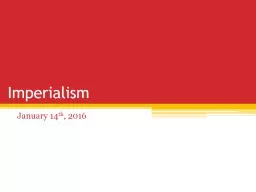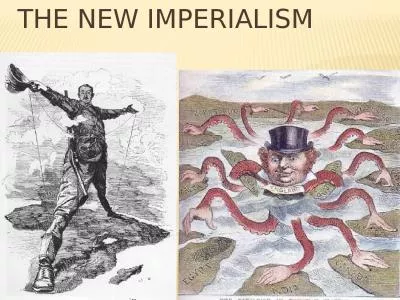PPT-European Imperialism Global Studies 9
Author : tatiana-dople | Published Date : 2018-10-20
Mrs Hart and Mrs Bernier The Atlantic Slave Trade In the 1500s the Europeans began to import slaves from Africa to the Americas But the use of slaves was nothing
Presentation Embed Code
Download Presentation
Download Presentation The PPT/PDF document "European Imperialism Global Studies 9" is the property of its rightful owner. Permission is granted to download and print the materials on this website for personal, non-commercial use only, and to display it on your personal computer provided you do not modify the materials and that you retain all copyright notices contained in the materials. By downloading content from our website, you accept the terms of this agreement.
European Imperialism Global Studies 9: Transcript
Download Rules Of Document
"European Imperialism Global Studies 9"The content belongs to its owner. You may download and print it for personal use, without modification, and keep all copyright notices. By downloading, you agree to these terms.
Related Documents

